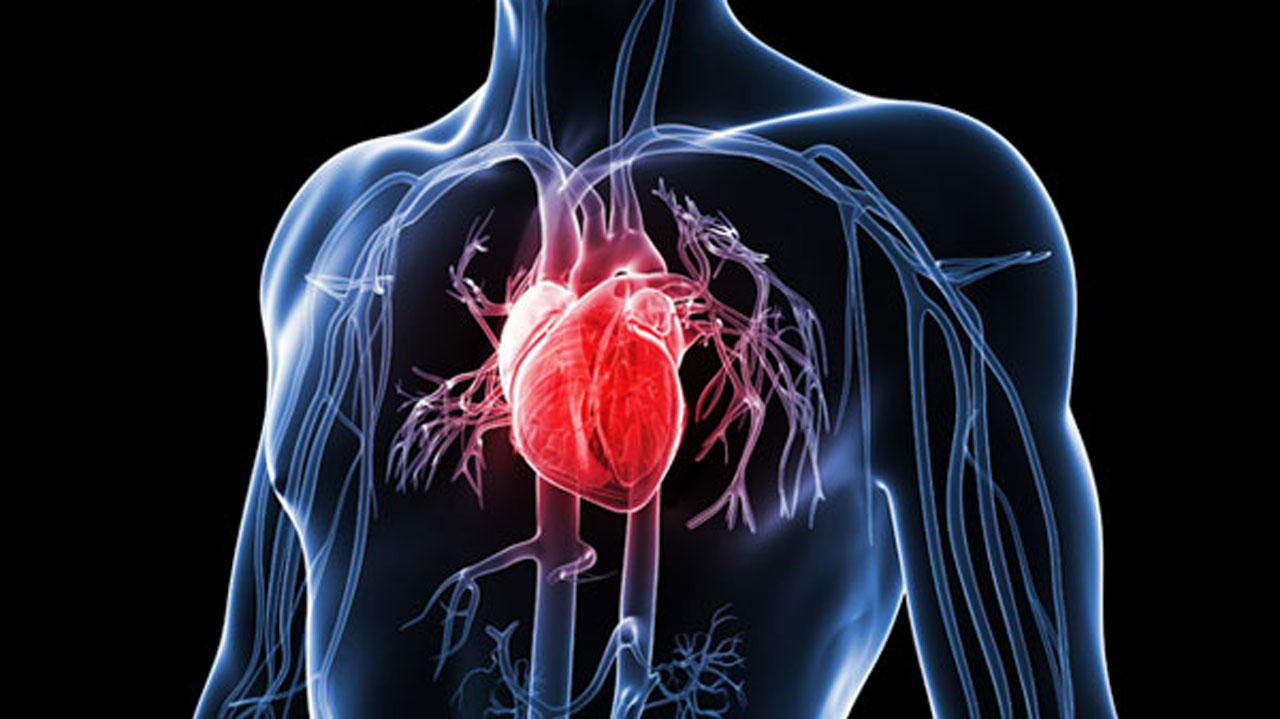Latest figures released by the World Heart Federation (WHF) and the Nigerian Heart Foundation (NHF), ahead of the World Heart Day (WHD) on September 29, show one in five people will die early from cardiovascular disease (CVD), which claims more lives than cancer and chronic respiratory diseases combined. According to the report, yet up to 80 per cent of heart disease and stroke cases are preventable.
Also, the NHF report that over 76.2 million Nigerians are living with hypertension (high blood pressure), which poses the highest cardiovascular disease burden in Nigeria. NHF states cardiovascular diseases are the leading cause of death globally, of which 85 per cent are due to hypertension, heart attacks, and strokes.
In addition, across the continent of Africa, heart disease, hypertension, stroke, heart failure, and other cardiovascular conditions are responsible for a rising number of premature deaths.
NHF said, in Nigeria and other African countries, lifestyle changes, poor healthcare access, limited preventive care, and delayed treatment contribute to high mortality rates from cardiovascular diseases – and that without urgent intervention, the burden of cardiovascular diseases will continue to overwhelm healthcare systems and cause preventable deaths.
As part efforts to address the menace, the medical experts have called for appropriate intake of heart- healthy diet, including having heart-friendly logo, on every consumer product in Nigeria as key to reducing rising cases of cardiovascular diseases in the country, especially hypertension, heart failure, strokes and kidney damage.
It is recognised that food labels are vital in preventing CVD by informing consumers about nutrients that impact heart health, such as sodium, saturated fat, and added sugars, which are linked to high blood pressure and unhealthy cholesterol levels. They say that by understanding and using easily identifiable labels, consumers can identify high-risk foods and choose options lower in these harmful components, thereby promoting heart-healthy choices and reducing overall CVD risk.
NHF says eliminating trans fat and lowering added salt through proper food identification, including a heart-friendly logo, is an easy way to reduce cardiovascular diseases. In Nigeria, it is note worthy that illiteracy population is very high and still rising, therefore the use of a heart logo will be easier for consumers to identify heart-healthy food.
Trans fat, also called trans fatty acids, is a type of ‘dangerous’ unsaturated fat that occurs in foods. Trace concentrations of trans fats occur naturally, but large amounts are found in some processed foods and are implicated in causing cardiovascular diseases.
A consultant Cardiovascular Health Physician and Executive Director (NHF), Dr. Kingsley Akinroye, said with the fast-growing industrialisation of sub-Saharan African countries, including Nigeria, the consumption of ultra- processed foods rich in trans fat will certainly continue to increase in the coming years. Akinroye said appropriate, simple food identification by consumers could improve dietary habits, and in synergy with other lifestyle interventions at the population level, contribute to reducing the burden of CVD in African populations.
Akinroye, however, said that currently, Nigeria does not have a policy on Front-of-Pack Labelling. “At the last meeting with Honourable Federal Minister of State for Health and Social Welfare, Dr Iziak Salako and National Agency for Food and Drug Administration and Control (NAFDAC) with NHF Scientific and Research Committees, it was stated by the Federal Ministry of Health (FMoH) that Nigeria does not have Front-of-Pack Labelling policy,” he said.
The Cardiovascular Health Physician said the NHF started the NHF Heart Mark Logo since 2003 and is the second National Heart Foundation in Africa, after Heart and Stroke Foundation of South Africa (HSFSA).
Akinroye regretted that while NHF has less than ten food products with the Heart logo, HSFSA has more than 100 food products carrying the Heart logo, while New Zealand Heart Foundation has a Heart-tick programme making it easier for consumer to make a choice, and in its portfolio has several food products with the Heart-tick on the packaging.
He said NHF strategy to reach the low socio economic groups include visiting markets in big cities like Lagos, Ibadan, Kano, Aba and Abuja during World Heart Day, World Hypertension Day, World Milk Day and displaying food products with the Heart logos, including having interactive sessions with market women and consumers.
In addition, Akinroye said essays are conducted periodically among secondary school students on “Importance of Heart Logo and family healthy living.” He said similar approach is used to engage students when school children and youths participate during World Physical Activity days, and during workshops held for Nigeria States running the Home- Grown School Feeding Programme during which emphasis is placed on the NHF Heart Mark Logo. “The last event was in 2024, when ten states were invited to Nigerian Institute of Medical Research, Yaba, Lagos, for a workshop on the NHF Heart Mark Food Logo.
The NHF claims Heart Mark Food Logo is a voluntary programme, and only food products approved by NAFDAC for consumption are allowed to approach NHF for the NHF Heart Mark Logo endorsement. “NHF is not inclined to make it a mandatory programme,”.
A Professor of Food Science, Chairman, NHF Scientific Committee, and Fellow of Nigerian Academy of Science (NAS), Adebayo Adeyemi, said the NHF Heart Mark Logo awareness is relatively low among Nigerians, most especially the low-socio economic group. “It is mostly concentrated in urban and formal retail settings among high-income consumers. Due to this, many who see the NHF Heart Mark Logo label do not have a full understanding of it,” therefore the awareness should be promoted through the National Public Awareness and Education programme.
On how to reach people in the low socio-economic group, Adeyemi recommended mass education through formal and informal methods. The food scientist said the importance of the Heart logo, as portraying heart-friendly foods can be taught right from Primary through Secondary school education system. He said the importance of heart mark logo identification in relation to cardiovascular diseases can be incorporated in the secondary school curriculum in agriculture, home economics, and dietetics.
Adeyemi said hospital environments are very strategic means of mass education through ante-natal and post-natal clinics, outpatient clinics, through social workers, and through functional primary health care centres. He said the awareness could be integrated with other health programmes at the community level by engaging primary health care workers, community health workers, and ‘village pharmacists’.
Furthermore, he said people could be reached by providing the Heart Mark Logo with interpretation in local languages using banners placed at open market places and aired in local television and radio stations.
On whether it is better to make the heart-friendly logo programme for food products mandatory, Adeyemi said: “I don’t think it should be mandatory, but rather, individual and willing food companies should be encouraged to carry the logo depending on the type of food or beverage products. However, selective products such as vegetable oils, dairy, and related products should be encouraged to carry the Heart logo. My view is premised to the fact that evidence of higher sales and resultant profit for companies that carry the Heart logo would be a stimulating factor for others to adopt the use of the logo.”
The food scientist said enforcement of the logo can not be and is not the key to reducing cardiovascular diseases in Nigeria. He explained: “The reason is that processed and packaged foods and drinks can not be and are not the only key to reducing cardiovascular diseases.
A relatively higher percentage of the Nigerian population relies on home prepared foods and street foods through local and fast food restaurants.
“Moreover, one should not underrate the contributions of social gatherings to food and beverage intakes among Nigerians; however minute this could be on percentage rating. This, therefore, calls for creating the awareness of caterers to the rising wave of cardiovascular diseases in Nigeria and their role in ensuring the use of heart-friendly vegetable oils and other ingredients and food materials / products.”
Adeyemi said the mass media has a very important and strategic role to play through various means at their disposal, including social media. He said other approaches could include, but are not limited to: domesticating a single Front Of Package Labelling (FOPL) system, peculiar to the Nigerian population literacy level, reviewing the FOPL policies; engaging multiple stakeholders in the awareness and the implementation.
Emeritus Professor of Nutrition from University of Ibadan, and Chairman, NHF Nutrition Committee, Tola Atinmo, said the NHF Heart Mark programme is publicised primarily through its websites, out- door bill boards in the metropolis and social media handles. He said partners of NHF, government, non government, and private organisations in Nigeria and around the world carry the message on their various social media platforms. Atinmo said the NHF Heart Mark logo on the products of existing organisations on the NHF Heart Mark food programme also accounts for the awareness of the programme.
According to the professor of nutrition, Atinmo, organisations on the programme are by their participation committed to strongly highlighting the Heart mark on their products and the advertising of their products on all platforms – outdoor, radio, TV, etc. prominently expose the logo. Atinmo further explained: “NHF free Heart-Health screening to the public, where we check blood pressure and give Heart- health talk, are occasions where we educate the public on the programme. Recently, we were in Wasimi, Ogun State. We addressed over three thousand people, including one thousand school children and youth from all over the States in Nigeria at the Segun Odegbami Sports academy (SOCA). The participants and villagers were told to look out for the heart mark logo on products that they consume. Professor Tola Atinmo, emphasise the power of choice that can’t be underestimated as the consumers would be the better for it in terms of healthy choices, especially as there are so many unbranded unhealthy products in the market, according to the latest Research published by NHF in a Peer reviewed Journal, “an important factor in the reduction of CVDs is nutrition, as unhealthy diets contribute to the high prevalence of CVDs globally.”
Atinmo said governmental regulatory bodies can be encouraged to support and partner with NHF in pushing the programme and enforcing manufacturers’ participation in the programme. “The media should join to continue to push the need for more products in the market to participate in the programme,” the professor of nutrition said.
To the Director of Communication and Marketing of NHF, an advertising expert, Mr Dele Adetiba, the Nigerian Heart Foundation, has several programmes to reach the public – both high-end and low income consumers. “One strategy is to reach young people through programmes in schools. The thinking here is to create an awareness of the dangers of heart disease and the link to food. This, hopefully, equips adults of tomorrow before they develop eating habits that may be difficult to break,” he said.
Adetiba said there are programmes in gyms for adolescents and in market places for the general public. “In-spite of this specifics programmesconducted by NHF, I believe the use of mass and digital media can increase awareness a lot more but this takes a big budget which NHF, as an Non Governmental Organisation (NGO) may struggle with,” he said.
On the question of whether the heart friendly logo could be made mandatory, Adetiba said: “It is pertinent to explain how food products get to the marketplace. All factory produced food items are approved by NAFDAC. This signifies that they are fit for consumer. But being fit for consumption does not make any food item perfectly healthy. So the undiscerning public needs help to make the subtle distinction between being safe to eat and being healthy.
“What the Heart friendly logo does is to identify those components of manufactured food items that are known to increase the risk of heart disease. In most cases, the components are on the label, but very few people read labels, and fewer still can understand it.
“Manufacturers already meet the safety threshold. To make the logo mandatory will mean they will have to meet a higher threshold or be removed from the market. In the end, public education is key. No one eats anything when convinced it could be detrimental to his health. That is why creating awareness remains the core mission of NHF.”
Ejinkonye is a public health analyst. He wrote from Lagos.






